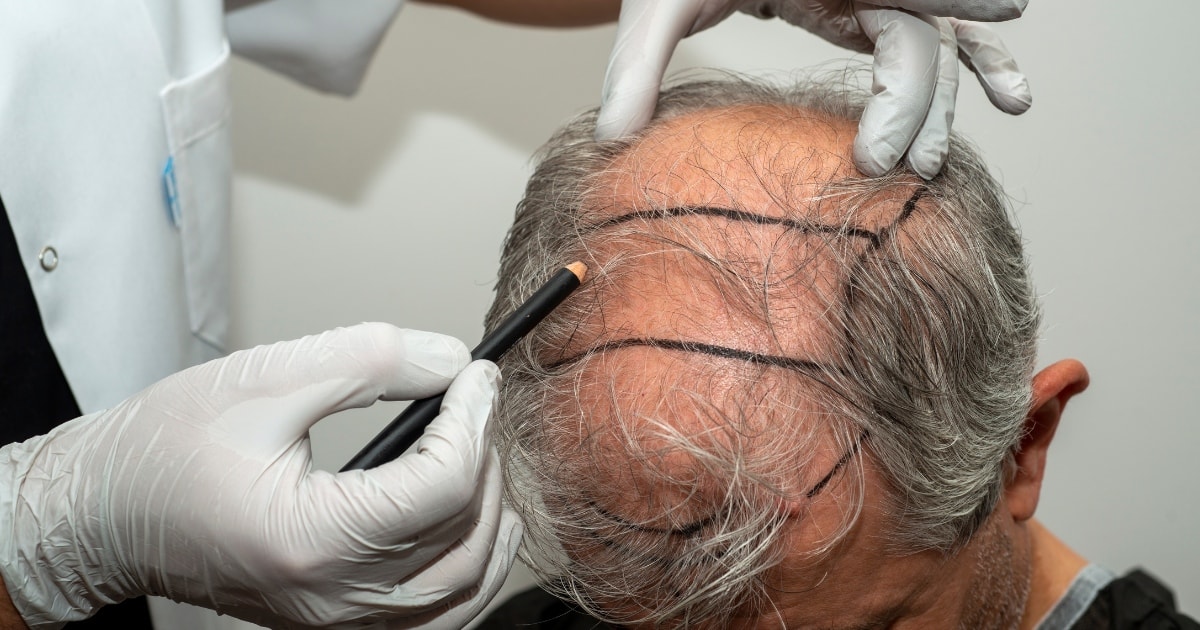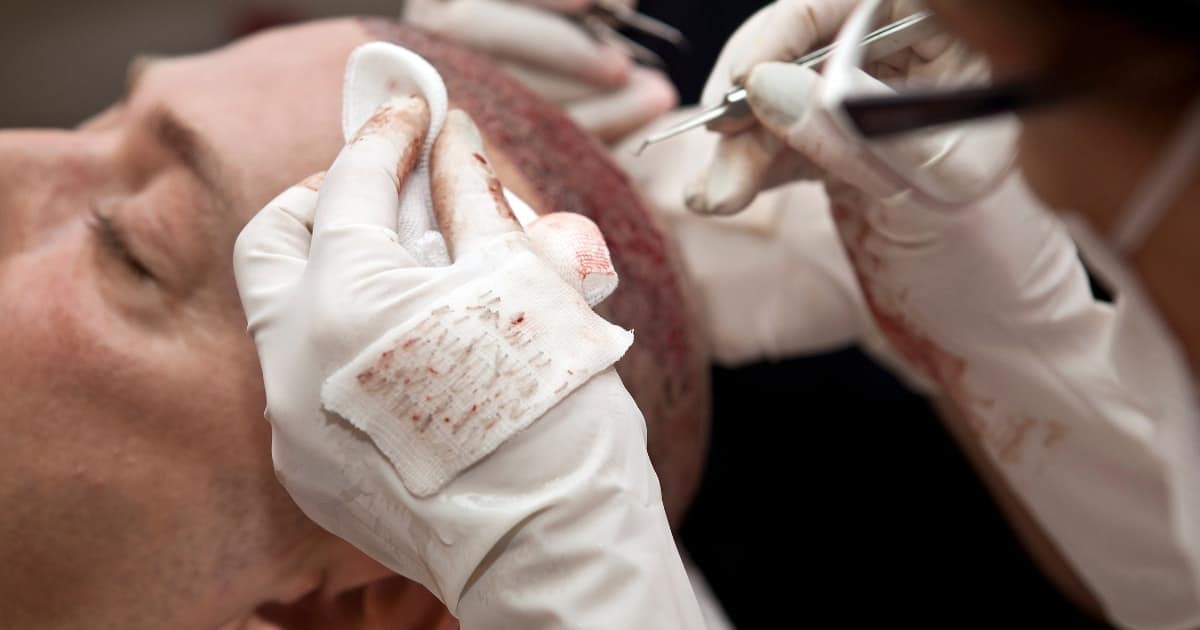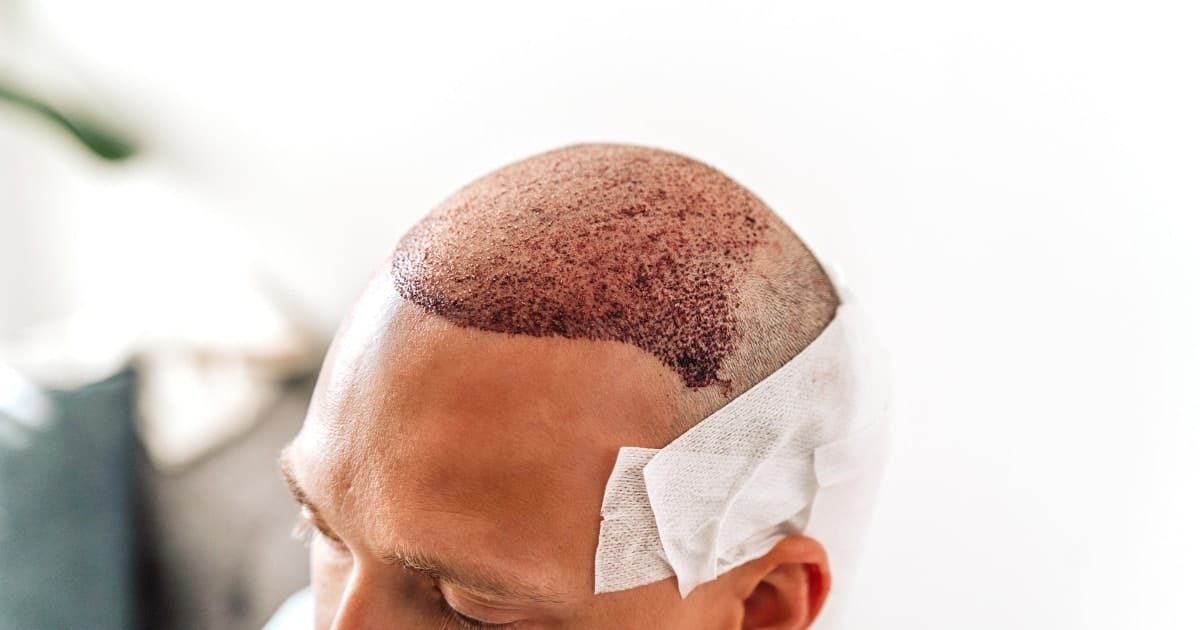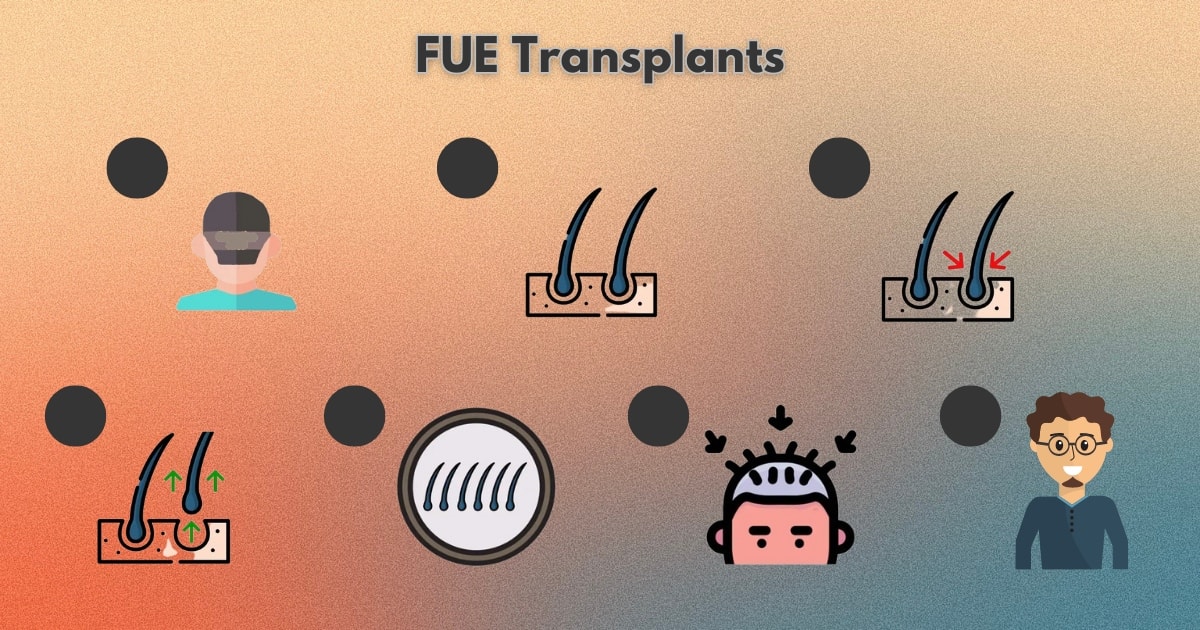So you’re wondering about the best hair transplant procedure or even getting a hair transplant in general, you’re not alone. we’ll break down the main differences between FUE and FUT so you can make an informed decision for your hair restoration procedure. Choosing the right hair transplant clinic is key to getting the best results.
What is Hair Transplant Surgery

A hair transplant is a medical procedure that takes hair from one part of the scalp to areas with thinning or no hair. Hair transplants are perfect for people with pattern baldness, a condition that affects 50 million men and 30 million women in the US alone. The donor hair from the back or sides of the scalp is genetically programmed to keep growing so these areas are the best for transplantation.
Hair loss can be caused by many factors, from genetic to external factors (diet, stress, illness, hormonal imbalance, medications). Having a good understanding of the procedure is key if you’re considering hair restoration surgery. Hair transplants are done in a medical office under local anesthesia so you’re comfortable throughout the process.
Hair Transplant Procedures: FUE vs. FUT

When it comes to hair transplantation, two main hair transplant techniques dominate the field: Follicular Unit Extraction (FUE) and Follicular Unit Transplantation (FUT). Each method has its unique process, catering to different needs and preferences.
FUE extracts individual hair follicles from the donor area and implants them in the recipient area, minimal scarring and quick recovery. FUT removes a strip of scalp tissue from the donor area, dissects it into individual follicular units and then transplants them.
FUE can still get a lot of grafts in one session so it’s suitable for those with extensive hair loss.
Understanding the differences between these two techniques is key for hair restoration patients. FUE and FUT have their pros and cons and the choice between them depends on individual circumstances and desired outcome.
Follicular Unit Extraction (FUE):
Extracting individual hair follicles from the donor area using a specialized micro-punch tool
Creating microscopic circular incisions, allowing for the precise removal of individual follicular units
Administering local anesthesia to ensure the patient’s comfort during the procedure
On average, harvesting 400 to 700 grafts per hour, making FUE a time-efficient technique.
Follicular Unit Transplantation (FUT)
Follicular Unit Transplantation (FUT) involves three major methods:
Removing a strip of scalp tissue from the donor area, typically the back of the head.
Dissecting the strip into individual follicular units under a microscope.
Transplanting the hair follicles to the desired area.
Benefits of FUE Hair Transplant

FUE hair transplantation has many advantages making it suitable for many patients. One of the main advantages is minimal scarring as the tiny extraction sites heal quickly and are almost invisible. On top of that FUE has the fastest recovery time, you can get back to normal activities in 1-2 days. Results from FUE procedure is usually very good, natural looking hair growth and density.
One of the advantages of FUE is its high graft survival rate which is 90-95%. This high survival rate means:
Thicker and fuller hair
Natural looking result compared to 75% of strip method
Minimal scarring
Fast recovery time
Dense natural hair
FUE hair transplant benefits:
Less pain
Less Inflammation
Lower risk of infection (less than 1% of patients will show signs of infection)
No need for general anesthesia (patients can drive themselves to and from the appointment)
One of the best parts of FUE that’s often overlooked, is the good surgeons. A good hair transplant surgeon can control how much hair is harvested from one area. To prevent the back of the scalp from becoming bald or patchy too, the best of the best know where and how to extract follicles without big groupings.
In short, by extracting individual hair follicles from the back of the head without big incisions, FUE gives a natural looking hairline and overall appearance. Making sure the transplanted follicles blend with the existing hair, so it looks completely natural.
Faster Recovery Time
The recovery time for FUE hair transplant patients is a lot quicker than FUT. Patients can typically return to work within five to eight days, and the overall healing process is much quicker. Because FUT requires a strip of the scalp to be removed, you need more than just the recovery time for the extraction and implantation sights to heal. The linear scar from the strip surgery needs to heal, you have to go back to your surgeon to check the sutures… There is just more involved in the aftercare.
Benefits of FUT Hair Transplant

Follicular Unit Transplantation (FUT) brings numerous benefits to the table, most notably for those suffering from extensive hair loss. FUT hair transplanted procedures have a high success rate, with graft survival rates between 95-98%. The quality of the grafts is robust and higher compared to other methods fue hair transplant, ensuring a natural and dense hair appearance. FUT hair transplant results are often very satisfactory, providing patients with significant improvements in hair density and coverage.
FUT commonly has the highest yield [of grafts] in a single session, making it an ideal choice for those with extensive hair loss.
The cost of FUT, like any other hair surgery, can vary depending on the number of grafts needed and the clinic’s pricing structure, but it’s usually a cheaper, more budget-friendly option compared to other hair transplantation procedures.
Cost-Effectiveness
FUT is generally more cost-effective than FUE, especially for the patients that need extensive hair transplants. The ability to harvest multiple hair grafts simultaneously reduces the overall cost of the procedure. Making it a more budget-friendly option compared to other hair transplantation procedures.
The Downside
The downside is that because of having to take a strip of the scalp from the head there is a higher chance of having a linear scar or two where the strip was taken and put back together. On top of that, having a strip removed may make it more difficult for the surgeon to give an the look of even hair density on the back of the head while taking enough grafts to fill in the areas that need it, unlike the FUE procedure, where they can take from different areas of the back of the head.
Ideal Candidates for Hair Transplant Procedures
Candidates that are best suited for hair transplant procedures generally possess the following characteristics:
Robust (full) hair on the scalp’s sides and back, serving as the donor regions for grafts
Well-defined baldness, thinning hair, or limited hair loss due to scalp injuries or cosmetic procedures
Stabilized hair loss with medical therapy
Motivation to achieve a more attractive hairline and increased hair density
Men and women who meet these criteria are generally suitable for hair restoration surgery.
Men with thinning hair or balding at the top or front of their head are ideal candidates for FUE hair transplants. This procedure can help them achieve a fuller and natural-looking head of hair. Ideal candidates for FUE hair transplants:
Have a great donor hair supply and reserves for future use
Have high donor hair density—at least 80 grafts per square centimeter
Are preferably older to minimize the risks of unpredictable future hair loss
Patients with wavier and thicker hair, as well as hair with low contrast in color to the scalp, are particularly favorable for FUE.
Ideal Candidates for FUT
FUT is suitable for individuals who:
Need treatment for extensive hair loss
Require a large number of grafts due to significant hair loss
Can accept a linear scar in the donor area, especially if it can be covered by longer hair
One of the first steps in getting a hair transplant is going through a proper consultation. Without the consultation, unless you’re a professional in the hair restoration field, you won’t truly be able to completely know what type of procedure you may have to get.
Find Out What Procedure You Might Qualify For
To see what procedure you could qualify for or just to get an estimate of how many grafts you may need pre-consultation, check out our Best Hair Graft Calculator.
Hair Transplant Procedure: Step-By-Step

The hair transplant process starts of with an initial consultation, during which the surgeon will evaluates the your existing hair loss pattern, your common goals and expectations, etc. During this consultation, the surgeon will also design a to complement your look with your facial features, age, and gender all in mind. Once the new hair-line design is finalized, the surgeon can perform the hair transplant surgery under localized anesthesia to ensure the patient is comfortable during the procedure.
The hair transplant team, hair surgeon and transplant technicians, work together to ensure the grafts are harvested and placed without trauma.
Creating small incisions in the recipient area
Carefully implanting the harvested follicles to mimic natural hair growth patterns
Ensuring the angle, direction, and density of the grafts are critical to achieving a natural-looking hair transplant.
Graft Placement
Graft placement requires precision in angle, depth, and density to achieve a natural-looking hair transplant. The process involves creating small incisions in the recipient area and carefully implanting the harvested follicles to mimic natural hair growth patterns.
The grafts should be placed within six hours of harvest, stored in a holding solution is used to keep them moist and easier to place.
Costs of Hair Transplant Procedures
FUE generally costs more than FUT due to its labor-intensive nature. Location can also significantly impact pricing. For instance, clinics in major metropolitan areas or regions with a higher cost of living tend to charge more for hair transplant procedures compared to those in smaller towns or countries with a lower cost of living.
Factors that influence the hair transplant cost:
The technique used
The clinic’s geographical location
The required number of grafts
Any additional treatments
The extent of hair loss
The number of grafts needed
Additional treatments, like PRP therapy
Post-operative care, including medications
Pricing is often based on the number of donor grafts, with these additional factors contributing to the overall cost.
Cost of FUE Hair Transplant
The cost of an FUE hair transplant varies by region. Here are some approximate costs:
In the UK, it is approximately £5 per graft
In the USA, the average range is from $5 to $10 per graft
In Canada, FUE transplants cost between CAD$7 to CAD$8 per graft
Overall, the average cost of the FUE procedure ranges from $4,000 to $15,000, with an average cost of approximately $9,000.
Cost of FUT Hair Transplant
The typical cost for a follicular unit transplantation (FUT) hair transplant is around $7,000. FUT is generally more cost-effective than FUE, especially for patients needing extensive hair transplants. The ability to harvest multiple grafts simultaneously reduces the overall cost of the procedure.
Choosing the Right Hair Transplant Surgeon
Choosing the right hair transplant surgeon is crucial to achieve the desired results. Consider the surgeon’s qualifications, certifications and experience when making your decision. Surgeons who exclusively practice hair restoration will give you more natural and undetectable results.
Patient reviews and testimonials can also give you an idea of the surgeon’s patient care and overall patient satisfaction.
Evaluating Experience and Credentials
Clinic and surgeon reputation also affect the cost, more established clinics and experienced surgeons charge more and for good reason.
When evaluating a surgeon’s experience and credentials you should consider how long they have been in practice and how many hair transplants they have done. An experienced surgeon can handle any complications that may arise during the procedure and recommend the best approach for your specific needs. Board certifications and other credentials are important indicators of a surgeon’s qualifications.
Reviewing Before-and-After Photos
Before-and-after photos of actual patients provide valuable insight into the surgeon’s skills and the results you can expect. These photos help assess a surgeon’s ability to deliver natural-looking results and reflect their consistency and skill in different cases. Check out ours before and after results here.
Recovery and Aftercare
Following your hair transplant, you should receive detailed instructions for scalp care, medication use, and activity restrictions to ensure optimal and speedy healing. Keep in mind that itching within 7-14 days post-operation is very common and oftentimes is an indicator of healing.
Aftercare continues while you sleep. Make sure that you sleep on your back with your head elevated to minimize swelling and protect the recipient area.
Hair transplant recovery plays a critical role in facilitating optimal healing and ensuring the best outcomes from your hair transplant.
Patients should avoid alcohol for at least one week after the procedure and direct sunlight for the first two weeks, wearing a hat when outdoors for six months.
Other Key Takeaways
Use chemical free shampoos and nourishing conditioners for post-transplant care
Apply conditioner and special ointments carefully, watch for reactions and sensitivity
Massage your scalp with oil or moisturizer regularly to keep it healthy after hair restoration
Start washing hair properly and avoid scrubbing newly transplanted grafts
Wash with warm water not hot water and avoid too much scrubbing
Follow expert recommendations such as product selection, follow-up appointments & ongoing hair care for successful transplantation.
Avoid alcohol for at least one week after the procedure.
Avoid direct sunlight for the first two weeks, wear a hat when outdoors for six months.
Long-Term Recovery and Results
Long term recovery for fue hair transplant surgeries takes several months, new hair follicles start to grow hair 2-3 months post-op and full growth usually achieved 10 months. Shock loss where transplanted hair falls out before regrowth usually starts within 2-4 weeks post-op and regrowth starts around 3-5 months.
Transplanted hair regrowth rate is 30% by 5th month and 60% by 7th month and final results are evaluated 12 months post-op.
Book A Consultation
If you’re dealing with hair loss and looking for a long-term solution, don’t worry. At Best Hair Transplant, we proudly offer the most competitively priced affordable hair transplants in Los Angeles. Our experienced team is here for you every step of the procedure to give you the best experience and to get you the best looking hair.
We understand that dealing with hair loss can be challenging, and we’re here to support you every step of the way. Our friendly and knowledgeable staff will take the time to understand your unique needs and concerns, ensuring a personalized approach to hair restoration.
Whether you’re curious about the process or ready to take the plunge, we’re here to help you regain your confidence and achieve the look you desire.
Call us at (213) 403-0455 to schedule your consultation or click here to contact us. Take the first step towards restoring your hair and confidence today.
Summary
In summary, both FUE and FUT hair transplant techniques offer unique benefits and cater to different needs and preferences, aiming for the best hair transplant results. FUE is known for minimal scarring, faster recovery, and high graft survival rates, making it an excellent option for those seeking a natural-looking hairline with minimal downtime.
FUT, on the other hand, provides high quality hair grafts and is more cost-effective for patients needing extensive hair transplants. Understanding the differences between these techniques and identifying the ideal candidates for each is crucial for achieving the best results.
Choosing the right hair transplant surgeon, evaluating their experience and credentials, and reviewing before-and-after photos are essential steps in ensuring a successful outcome. Post-operative care and long-term recovery are also critical factors in the overall success of the hair restoration procedure. By following the guidelines and recommendations outlined in this guide, you can make an informed decision and take the first step towards reclaiming your hair and confidence.
Frequently Asked Questions
What is the difference between FUE and FUT hair transplants?
The main difference between FUE and FUT hair transplants is the method of hair follicle extraction. FUE uses a micro-punch tool for individual extraction, causing minimal scarring and faster recovery, while FUT involves removing a strip of scalp tissue and dissecting it into follicular units, providing higher quality grafts and cost-effectiveness.
How long does it take to recover from a hair transplant procedure?
Recovery time after a hair transplant varies by technique, with FUE patients often returning to work within 5-8 days and FUT recovery taking up to a month. Full hair growth is typically achieved by 10 months post-procedure.
How much does a hair transplant cost?
The cost of a hair transplant varies based on factors such as the technique, location, and number of grafts. For instance, FUE procedures are generally more expensive, with prices typically ranging from $4,000 to $15,000, while FUT procedures usually cost around $7,000.
Who are the ideal candidates for hair transplant procedures?
Ideal candidates for hair transplant procedures have healthy donor hair on the sides and back of the head, well-defined baldness or thinning of existing hair, and stabilized hair loss with medical therapy. FUE is suitable for those with high donor hair density, while FUT is ideal for those with extensive hair loss.
How do I choose the right hair transplant surgeon?
Choose a hair transplant surgeon based on their qualifications, certifications, experience, and patient reviews, and look for one who specializes in hair restoration for natural and undetectable results.
Key Takeaways
Follicular Unit Extraction (FUE) and Follicular Unit Transplantation (FUT) are the two main hair transplant techniques, with FUE known for minimal scarring and quicker recovery, and FUT for providing a larger number of grafts in a single session at a lower cost.
Ideal candidates for FUE typically have a good donor hair supply, high donor hair density, and are older, while FUT is suited for individuals with extensive hair loss who require a large number of grafts and can accept a linear scar in the donor area.
Choosing the right hair transplant surgeon involves evaluating their experience, credentials, and patient reviews, and examining before-and-after photos to ensure they can deliver natural-looking hair transplant results.
